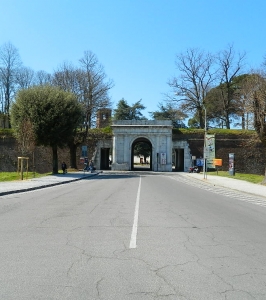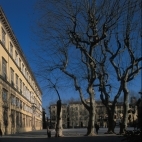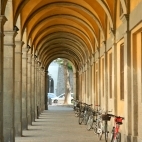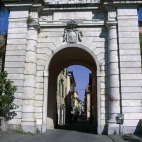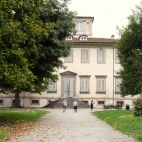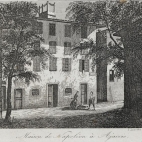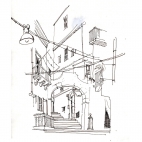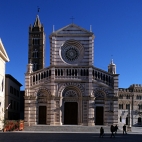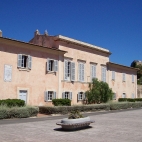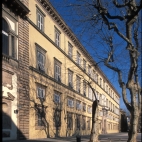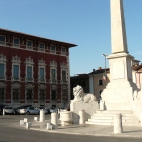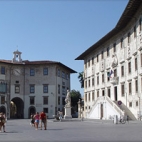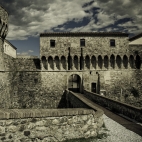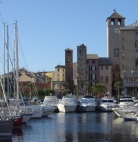Porta Elisa and Via Elisa in Lucca
If one thinks of Lucca as a nucleus proudly contained within its walls, then the opening of a new gate – seen as a wound or a respiratory organ, depending on one’s point of view – in the round city is certain to appear among the most symbolic of the many interventions promoted and brought to completion by Élisa Baciocchi. It opened the city to the world and in particular the world over which Élisa was the undisputed and peaceful sovereign. Élisa’s nomination, on 3 March 1808, as Grand Duchess of Tuscany in fact reversed the situation that had led the people of Lucca to avoid opening a gate in the stretch of wall facing east and Florence: not only was the conflict between the two cities by then only a memory, but the fact that they both belonged to the Baciocchi dominion, even if formally independent, required underlining.
The new gate, which would bear the name of the sovereign, needed to lead, through a new wide and arcaded street, directly to the grandiose piazza that was opened up in front of the Palazzo Pubblico and named after Napoleon. What was wanted was a triumphal entrance: it was no accident, then, that the plan, entrusted to the Lucca architect Giovanni Lazzarini, bears the inscription Drawing of a new Gate for the city of Lucca with the air of a triumphal arch, nor was it an accident for it to be preceded outside the city walls by a broad tree–lined avenue, the first stretch of the road that would join Lucca and Florence. One also wished to seize the opportunity for radically and freely rethinking a whole section of the city within the walls that up until that time had remained at the margins of construction development, creating a new quarter for the residences of high functionaries and the princes themselves. Toward this end, even the demolition of the medieval Porta dei Santi Giovanni e Protasio was scheduled, considered at the time a ’sad’ monument to be eliminated in order to increase the light and air in the neighbourhood
Economic constraints and unrest among the populace reduced the grand intentions for the project. The gate, built in 1809 reusing marble made available by the demolition of the church of the Madonna, was judged to be paltry and expansion plans immediately emerged that would raise the structure and add two lateral arches (in reality added for purely functional reasons and not until 1937). Only the first part of the communication axis oriented toward the Piazza Napoleon, this too named after Élisa, was completed. After the drawing up of many different plans by Lazzarini and Garella already in 1809, in the end Via Élisa was realized in 1812 by Giuseppe Marchelli, an architect just returned from a period of training spent in Paris. Opening up in front of the new gate is a grandiose porticoed hemicycle with the residence of the Secretary of State, from which departs a rectilinear path, also porticoed, where the High Judge is set up: a tradition in minor scale of the Rue de Rivoli in Paris which, even if incomplete, held undeniable appeal.
Porta Elisa and Via Elisa
Lucca









